The initiator of the museum institution in Lublin was the outstanding ethnographer and linguist Hieronim Łopaciński (1860–1906). On his initiative, in 1901, two exhibitions were organised in Lublin, which were the beginning of the future museum. The first one, exhibited in the post-Dominican building, was devoted to art objects and antiquities. Łopaciński was the author of both the program and the catalogue of the exhibition, but due to the help of private individuals and Lublin institutions, as many as 4,000 exhibits were collected – graphics, handicraft products, sculptures, documents (prints and manuscripts), archaeological relics, numismatic items, military objects, maps. The second exhibition, agricultural and industrial, had a special section of folk studies, where, among others, models of cottages, folk costumes, handicrafts were shown. Łopaciński intended to use a group of these exhibits as the nucleus of an agricultural and industrial museum.
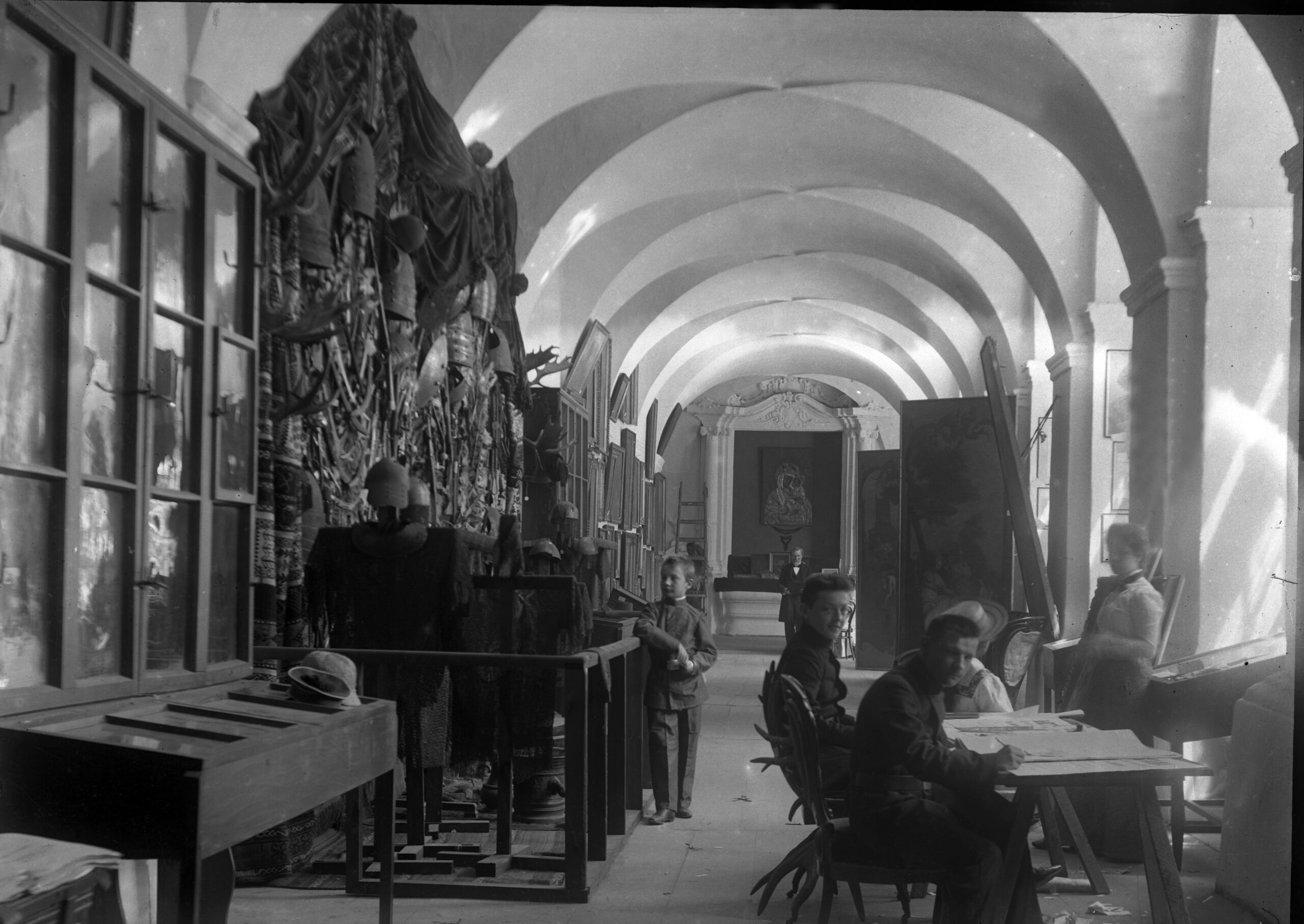
In 1905, due to the initiative of Łopaciński, the Founding Committee of the Museum was established at the Lublin Agricultural Society.
After the sudden death of Hieronim Łopaciński, continuators of his idea appeaered. Valuable collections were donated by many scientific societies and respected people in Lublin. On 12 December 1906, the museum was officially opened.
In the following years, the number of exhibits increased. In 1914, a Society was established under the name of the “Lublin Museum”, whose statutory goal was to take care of the Museum, collect objects, research and share, as well as popularise science and art. The main organiser was Szymon Tadeusz Piotrowski, who bought over 350 objects from his own funds. In June this year, a property at Namiestnikowska Street (now 4 Narutowicza Street) with post-Piarist buildings was bought.
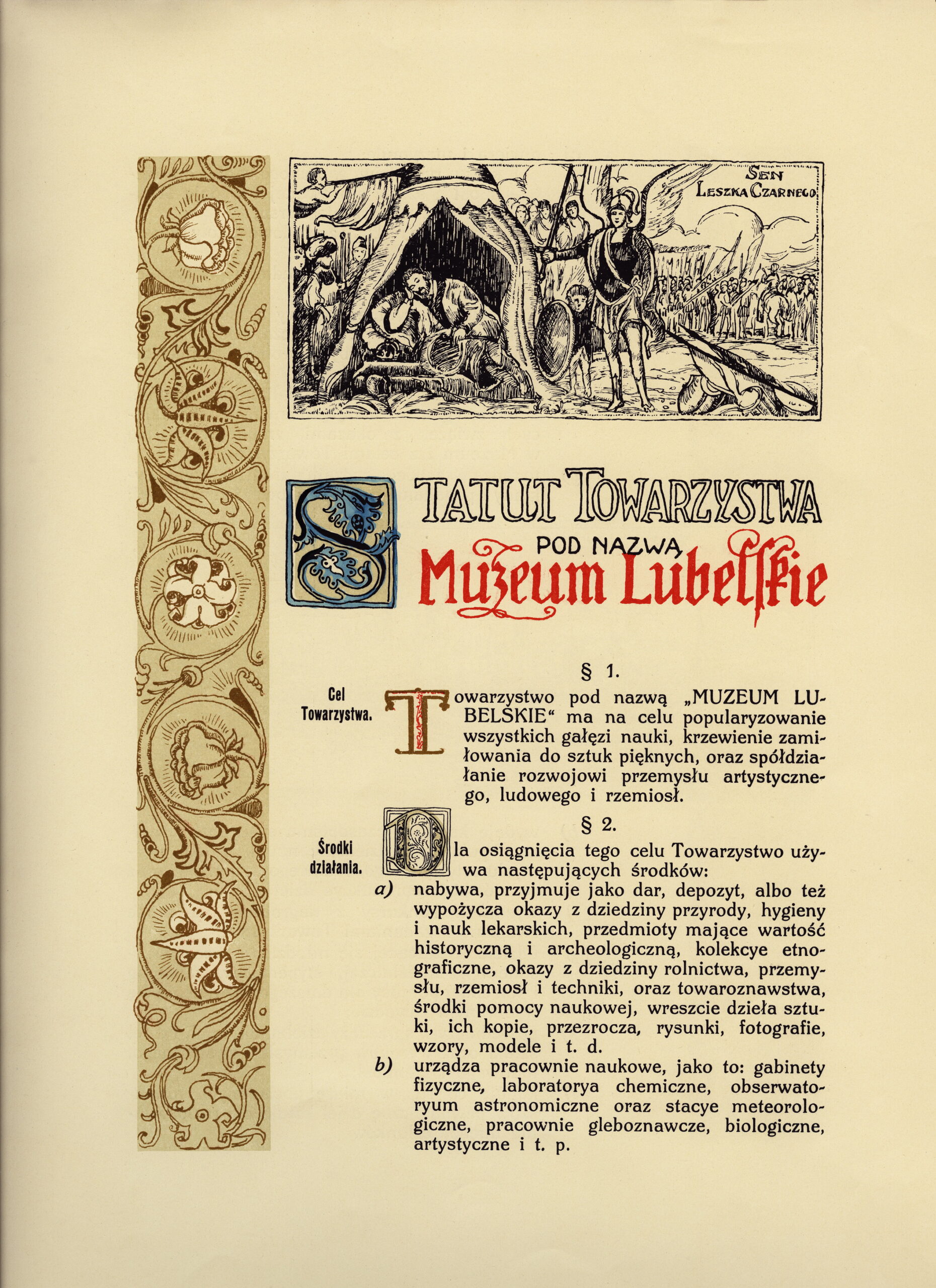
The First World War did not stop the work on the organisation of the Museum. The buildings were renovated, the collections were organised, and in 1918, immediately after the end of the war, the preparation of new exhibitions began.

The Lublin Museum took over the collection of Wacław Lasocki from the former Museum of the Lands Located between the Vistula and the Bug Rivers in Nałęczów.
The Society decided to employ the curator of the collection, Marian Trzebiński, an artist-painter from Warsaw.
The ceremonial opening of the Museum in its new seat took place on 18 February 1923. On the ground floor one could find the lapidarium, archaeological monuments, memorabilia related to the history of the Lublin region, numismatic items, weapons, candlesticks, candlesticks, a collection of 19th-century smoking pipes, relics from Lublin, memorabilia of the 1831 and 1863 uprisings, the World War and battle paintings. On the first floor one could see the gallery of old Polish and foreign painting, a collection of English graphics, furniture, porcelain, medals and contemporary painting.
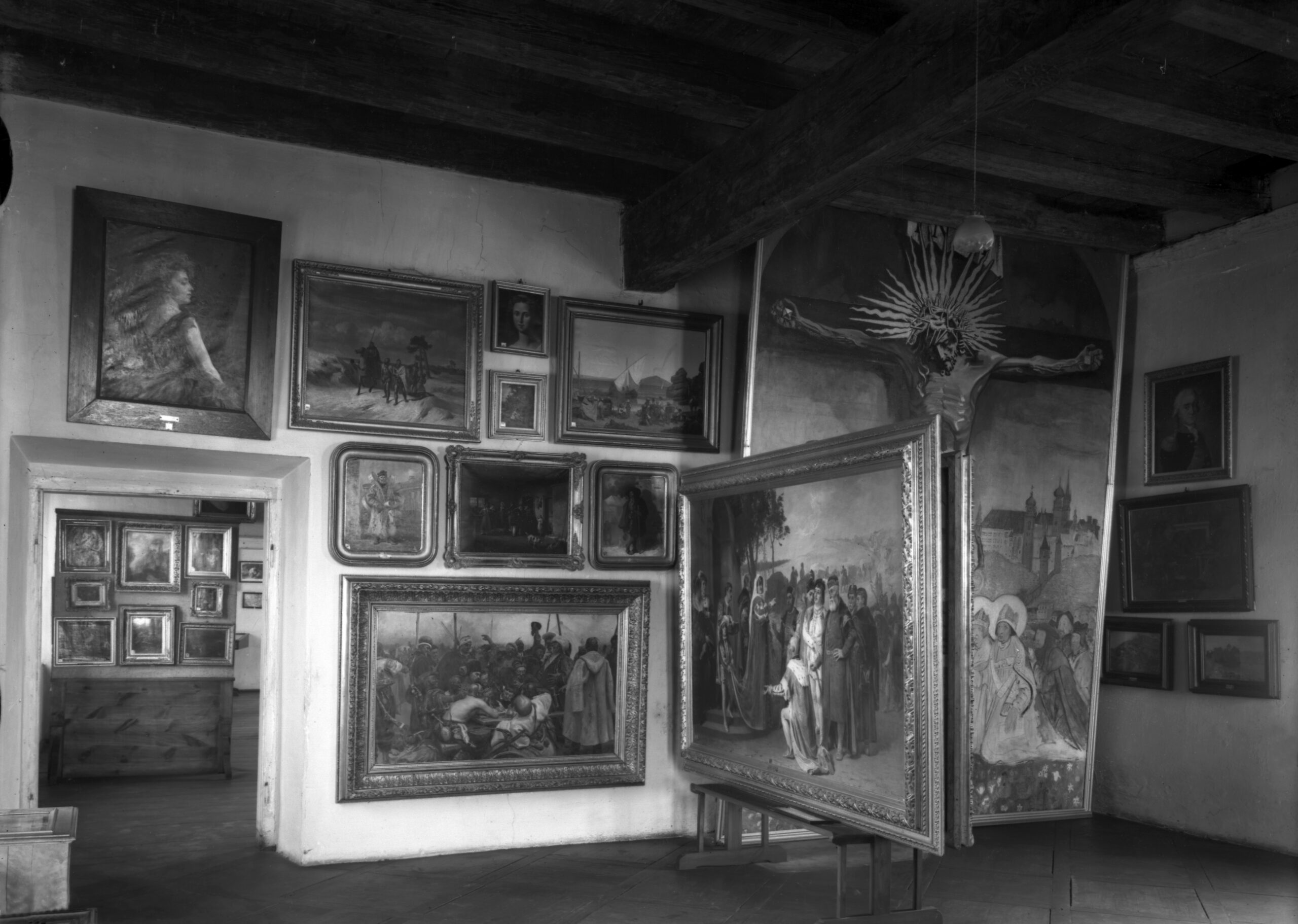
In 1929–1939, an ethnographic and geological exhibition was organised, as well as a library and a reading room, a card catalogue of collections was introduced, inventories of individual categories of monuments were prepared – furniture, maps and plans, historical mementoes, Polish and foreign ceramics, graphics, numismatics, weapons and uniforms, paintings and sculptures, ethnography, zoology, botany, geology, foreign ethnography, photography, drawings, and the book collection was catalogued. In 1934, the statute of the Lublin Museum was developed. The document emphasised the regional nature of the collections. A Museum Council was also established to take care of the institution. Just before the Second World War, the collections were written into the inventory books, including the sections of: archaeology, ethnography, art, history and nature. At that time, the Lublin Museum had ca 14,000 exhibits.
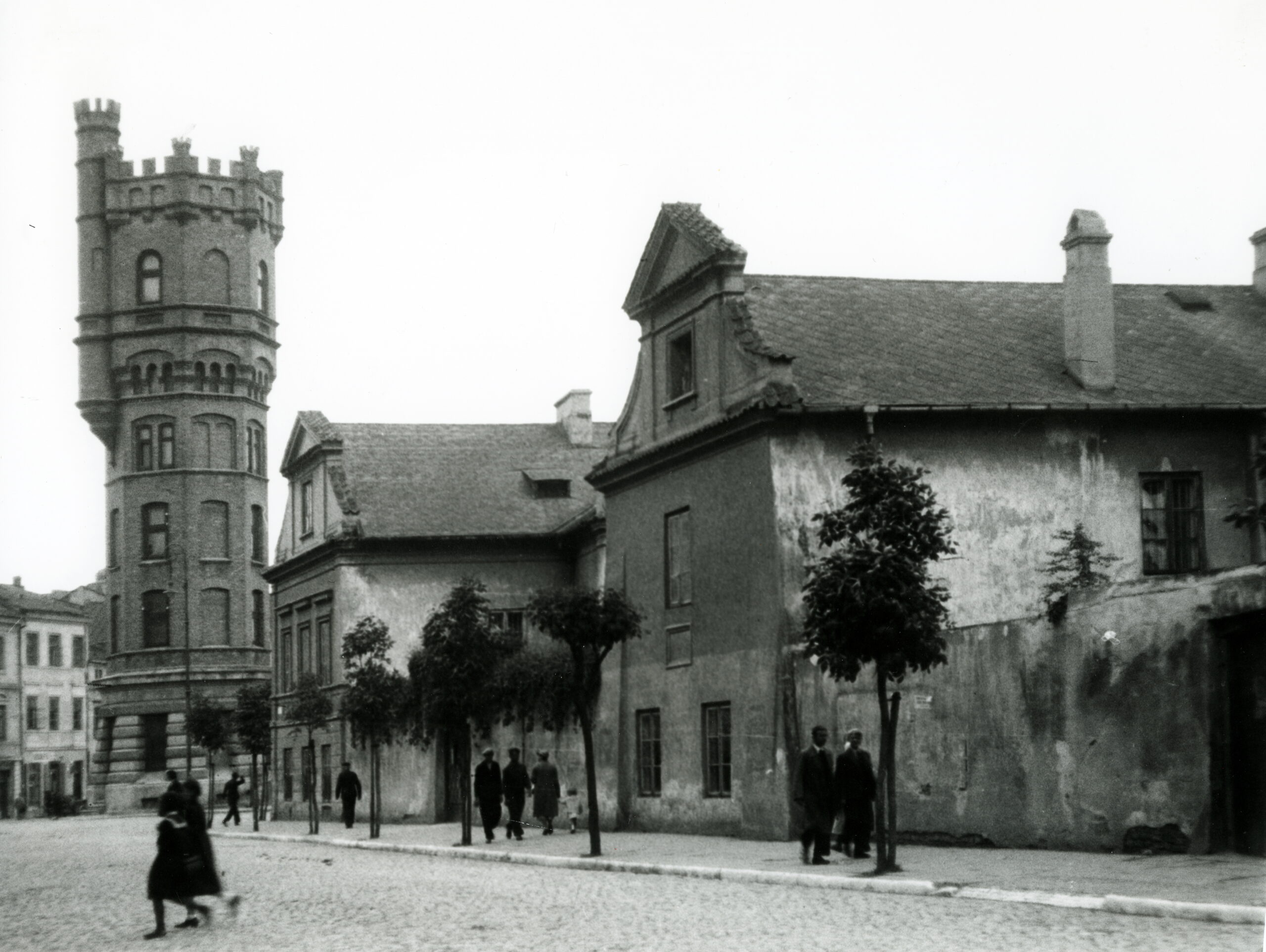
The bombing of Lublin on 9 September 1939 caused enormous damage to the Museum. Part of the building was in ruins, a valuable collection of birds and other natural collections, documents and museum records were lost. Already at the end of September, the German occupation authorities took the keys to the museum rooms and warehouses. Erwin Rychter and Karl J. Ludwig, who became the permanent “guardian” of the collection, began to systematically deplete the resources of the Lublin Museum. German officials took more valuable exhibits from exhibitions and warehouses – paintings, sculptures, furniture, porcelain, glass, clocks, and numismatic items. 18 chests in which deposits were stored have disappeared. In 1940, in the building of the Museum, the Germans organised a museum warehouse, where the remains of Lublin’s collections and looted artefacts brought from eastern Poland were gathered.
On 28 July 1944, the Polish Committee of National Liberation appointed Wiktor Ziółkowski as the director of the Museum. Under his leadership, the employees began to inventory the surviving collections and record losses. The first exhibition – an ethnographic one – was organised only in October 1946, the ceremonial opening of permanent exhibitions in the building at 4 Narutowicza Street took place on 30 October 1949.
On 1 January 1950, the Lublin Museum was nationalised, and a year later its name was changed to the District Museum. There were gradually more purchased and donated exhibits. Just before the nationalisation, the institution employed 8 people, and the collection was composed of 5,219 objects.
In 1950, the first branch of the Museum outside of Lublin was incorporated into its – the Stefan Żeromski Museum in Nałęczów, established in 1928. It is located in the Żeromski’s cottage, which was the writer’s studio, built in 1905 in the Zakopane style by Jan Koszczyc-Witkiewicz. To this day, the facility looks after Żeromski’s memorabilia and documents the traces of his social and cultural activity in Nałęczów.
The Archeology Department was established, collecting the objects almost from scratch, through field research, in Lublin and the region.
The museum moved to its headquarters in the Lublin castle, while losing its property at Narutowicza Street. Initially, it shared the location with the District House of Culture, and after 20 years it became the only owner of the castle.
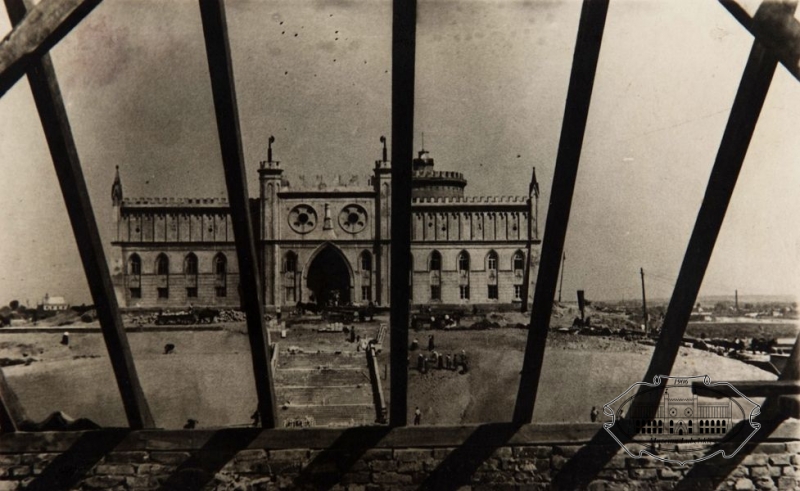
On 21 July, the official opening of the Museum headquarters in the castle took place.
Four permanent exhibitions were organised in the southern wing: Lublin Region and the General History and the History of Ancient Poland, Gallery of Polish Painting from the 15th–20th Centuries, Folk Art and Crafts of the Lublin Region, and Artistic Industry of the 17th–19th Centuries. Valuable deposits were obtained from the National Museum in Warsaw (including the Union of Lublin by Jan Matejko), many works were purchased with state funds, and archaeological and ethnographic relics were collected from own field research.
The Numismatic Cabinet was separated from the Art Department.
The Conservation Workshop and the Scientific and Educational Department were established, which served as guides and conducted cultural education for the inhabitants of the city and the region.
The History Department was established, which four years later transformed into the first local branch of the District Museum with its headquarters in the Kraków Gate being adapted for museum purposes (from 1979 the History of Lublin City Museum).
A second outside of Lublin, literary and biographical branch was created – the Bolesław Prus Museum in Nałęczów with its seat in the Małachowski Palace.
The first issue of the yearly “Studia i Materiał Lubelskie” (Lublin Studies and Materials) was published, in which Museum employees and authors from outside the institution publish the results of their research. By 2020, 22 volumes had been published.
W 1966 r. powołano dwa muzea regionalne – w Łęcznej i Lubartowie. Pierwsze z nich, zajmujące zabytkową XVII-wieczną synagogę, początkowo zaplanowane jako Muzeum Lubelskiego Zagłębia Węglowego, szybko przybrało charakter interdyscyplinarny, gromadząc pamiątki historyczne, archeologiczne, etnograficzne oraz przyrodnicze, związane z dziejami Łęcznej i jej wielokulturową tradycją. Muzeum Regionalne w Lubartowie mieści się w XIX-wiecznym dworku i dokumentuje historię, sztukę ludową oraz tradycje Lubartowa i Ziemi Lubartowskiej, zbierając m.in. wyroby lubartowskiej fajansarni założonej w 1840 r. przez Łubieńskich.
The second local branch of the Museum was established – the Józef Czechowicz Literary Branch. Initially, it was located in the building of the former monastery at 10 Narutowicza Street, currently its seat is in a tenement house at 3 Złota Street.
All the rooms of the castle were handed over to the District Museum in Lublin. Permanent exhibitions of paintings, decorative arts, weapons, archaeology, ethnography and numismatics were opened.
The Graphic Art and the Military Departments were separated from the Art Department.
The Regional Museum in Kraśnik was established, with rich collections in the field of ethnography, archaeology and the history of the city and the region. Its branch, called the Museum of the 24th Uhlan Regiment, is the only museum in Poland devoted entirely to the history, organisation, armament, uniforms and participation in the war campaigns of a Polish cavalry regiment. The famous 24th Uhlan Regiment was stationed in Kraśnik during the interwar period, fought in the September campaign, in 1940 in defence of France, in 1944–1945 on the Western Front as part of the 10th Brigade, and later the 1st Armoured Division commanded by Gen. Stanisław Maczek.
On the initiative of former political prisoners of the Nazi prison at the castle, in 1979, a third local branch was established – the Museum of Martyrdom “Under the Clock”, in the building at 1 Universytecka Street, where the Gestapo detention centre was located during the occupation.
The fourth local branch was opened – the Manor House of Wincenty Pol Museum at 13 Kalinowszczyzna Street. The headquarters is an 18th-century manor house that once belonged to the Pol family.
Since the 1980s, the Museum has been intensively developing its activities in fields of exhibition, research, publishing and education.
The institution returned to its former name – the Lublin Museum.
As part of the 90th anniversary of the Museum, three new painting galleries were presented – Polish Painting of the 17th–19th Centuries, Foreign Painting of the 17th–18th Centuries, and Historical and Battle Painting. The visitors were granted access to the Holy Trinity Chapel.
In 1998, the Lublin Museum was entered into the State Museum Registry. In 2000, the Gallery of 20th-Century Painting as well as a part of the permanent ethnographic exhibition were opened, and a year later the permanent exhibition of Polish Coins and Medals of the 10th–20th Centuries was begun. In 2001, the Museum was also awarded the honorary title of the Ambassador of the Lublin Voivodeship.
The renovation of the buildings on the castle hill and the Kraków Gate was completed. An archaeological exhibition Tracing the Past. The Ancient History of the Lublin Region was created, which is the largest exhibition on this subject in the Lublin region and the first with the use of multimedia.
Works at the Lublin castle included a thorough reconstruction of the northern wing, as well as modernisation in parts of the southern and western wings. Modern permanent exhibitions were created: the Royal Tribunal in Lublin, the Gallery of Polish Painting of the 19th and 20th c., where the painting Union of Lublin by Jan Matejko is displayed, the “Zamek” Group and Avant-Garde, and the Orthodox Painting Gallery, Irena Hochman and Tadeusz Mysłowski Gallery, as well as a new space for temporary exhibitions. The newly created exhibitions are fully modern and use multimedia that allow for their fuller reception.
On 15 May 2020, the Lublin Museum was elevated to the rank of the National Museum by the decision of the Minister of Culture and National Heritage.
The Lublin Museum has won over 30 awards and distinctions, including three first awards of the Minister of Culture and National Heritage in the competition for the Museum Event of the Year.



